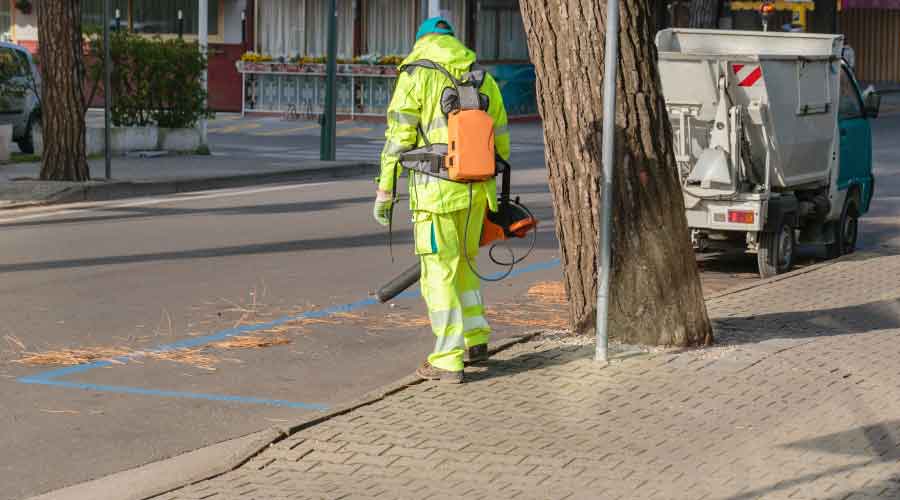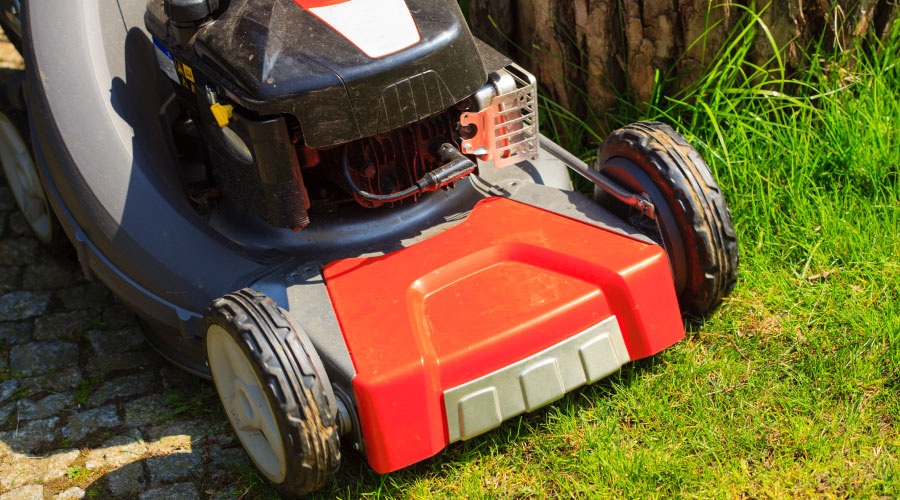Electric Grounds Equipment Goes Modern
More grounds managers are embracing battery-powered grounds equipment and seeking a range of sustainability and performance benefits
For homeowners, changing from gasoline-powered lawn maintenance equipment to battery-powered alternatives is easy. Drive down to the nearby home improvement store, buy a new leaf blower or grass trimmer, and spend the afternoon tidying up the yard.
The conversion is not as easy for grounds managers at institutional and commercial facilities or municipalities. Managers and front-line workers must navigate many more layers, such as budgeting, specification and training.
Despite the challenges, more managers are changing from gasoline-powered equipment to battery-powered units, mostly for environmental reasons. But the process involves a series of critical steps.
Transition takes time
Dan Mabe is the founder and chief executive officer of the American Green Zone Alliance (AGZA), an organization that helps municipalities, facilities and private companies transition from gasoline-powered equipment to battery-powered equipment.
A former landscaping business owner, Mabe converted his company into an all-electric operation in the mid-2000s before starting AGZA, which offers certifications for communities and grounds maintenance employees for sustainable operations.
Mabe’s evolution is based on the belief that battery-powered equipment is an environmentally friendly alternative to gasoline-powered units, but he says he understands the transition takes time, and with larger organizations, the conversion will not take place overnight.
“We’ve created a programmatic approach, a responsible approach based on two pillars: economic and workload feasibility,” Mabe says about the certification process. “It isn’t just cold turkey: Get rid of gas, and go all electric.
“We’re helping these large institutions and academic institutions basically either convert to the minimum standard, which is phasing out two-stroke equipment for all routine maintenance, or they can take it to a Level 3 or 4 (certification) where they phased out all gas operations for routine maintenance.”
When an institution or municipality contacts AGZA about certification, the association offers resources to help managers make decisions that are sustainable and deliver long-term benefits.
“We’re on contract with several municipalities,” Mabe says. “What’s great is they’re doing it responsibly. We go in and assess their gas operations, and then we generate reports on what the feasibility of the economics and workloads that a successful transition and implementation can happen.
“Some cities will just say, ‘Hey, let’s put a ban in place and let it work itself out,’ and others will say it’s going to be phased and then we’re going to make sure there’s resources provided. There are a lot of different approaches.”
Financial implications
Not surprisingly, the biggest hurdle organizations face when transitioning to battery-powered grounds equipment is financial.
Upfront costs of buying electric trimmers, leaf blowers and chainsaws, as well as the infrastructure to power them, can be challenging for grounds department, but the challenge is especially difficult when budgets are tight because of fallout from the COVID-19 pandemic.
“When you’re going from a gas-powered tool to a battery-powered tool, the tools themselves are not comparable in costs,” says Brian Stewart of electrifynow.net, an organization that promotes using cleaner, more sustainable energy. “The real capital expense hurdle is that if you have to buy a lot of batteries to power tools, you’re swapping them out frequently. So rather than having these gradual payments that you almost don’t notice, because you’re filling up your tools with gas at a central filling tank, you’re buying all (those batteries) at once.”
If a department needs more batteries, it has to find room in the budget for all of the infrastructure required to keep tools running with no downtime for charging batteries.
“It’s a legitimate cost concern,” Stewart says. “If suddenly you’ve got like 100 of those batteries, now you have to figure out how you’re going to deal with that. There are also safety issues that you’ve got to be aware of, where there are some spaces in a shed that you’re storing stuff in that isn’t properly electrified to enable you to do it.”
After the initial investment, managers should see a reduction in expenses. One critical area of savings is for fuel. Stewart says the cost per hour of operation for battery-powered equipment is 1/30th of the cost to operate gasoline-powered equipment.
“That doesn’t include the maintenance savings because these electric devices typically don’t require maintenance the way gas machines do,” Stewart says. “You still have to sharpen the blades, but you don’t have to tune the engine, replace the filters and all that. There’s a significant operational cost savings out there once you get past the capital expense part.”
Related Topics:













